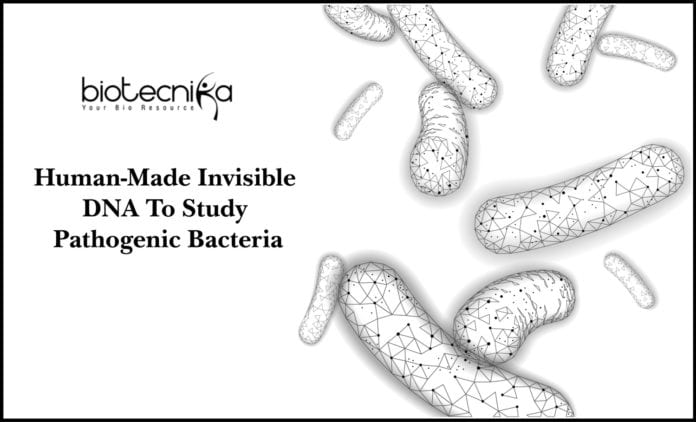Human-Made Invisible DNA To Study Pathogenic Bacteria
Bacteria is omnipresent. Be its soil, water, our skin, and within our own bodies. Most of them are pathogenic and cause serious infections. To battle these pathogenic bacterial species via effective remedies, scientists on first hand need to understand the possible genes in the bacteria, responsible for the pathogenicity.
Researchers can identify pathogenic genes via genetic engineering – by inserting human-made DNA into a bacteria cell. The major problem encountered is that the bacteria have evolved complex defense mechanisms to protect themselves against foreign particles. Current genetic engineering approaches frequently to disguise the human-made DNA as bacterial DNA to hamper these defenses, but the procedure requires highly specific modifications and can be expensive and time-consuming.
In a paper published recently in the Proceedings of the National Academy of Sciences journal,
Forsyth Institute Scientists – Dr. Christopher Johnston and his coworkers have identified a novel technique to genetically engineer bacteria by making human-made DNA invisible to a bacterium’s defense systems. In theory, the procedure can be applied to virtually any type of bacteria.
Dr. Johnston said that when a bacterial cell detects the entry of any foreign particle, it immediately triggers a mechanism to destroys
it. Bacteria live under constant danger of attack with a virus, so they have developed exceptionally effective defenses against those threats. The same issue is encountered by scientists when they try to insert a human-made DNA into a bacteria.To get beyond this barrier, scientists add special alterations to disguise the human-made DNA and fool the bacterium to believing the intruder is part of its own DNA. This approach sometimes works but may take considerable time and resources.
Johnston’s strategy differs. Instead of incorporating a disguise to the human-made DNA, he eliminates a particular part of its genetic arrangement called a motif. The bacterial defense system requires this theme to be current to recognize foreign DNA and mount an effective counter-attack. By removing the motif, the human-made DNA becomes virtually imperceptible to the bacterium’s defense mechanisms.
This new method requires less time and fewer resources than current practices. From the analysis, Johnston utilized Staphylococcus aureus germs as a model, but the underlying strategy he developed could be used to sneak past these significant defense mechanisms which exist in 80 to 90 percent of bacteria that are known now.
This new genetic technology tool opens the possibilities for study on bacteria which haven’t been well studied previously. Since scientists have a limited quantity of resources and time, they have a tendency to work with germs which have been broken into, Johnston explained. With this new instrument, a substantial barrier to breaking bacteria’s DNA was solved, and researchers may use the method to more clinically important bacteria.
“Bacteria are the drivers of our planet,” stated Dr. Gary Borisy, a Senior Investigator at the Forsyth Institute and co-author of this newspaper. “The capability to engineer bacteria has profound consequences for medicine, for agriculture, for the chemical sector, and for the environment.”






























